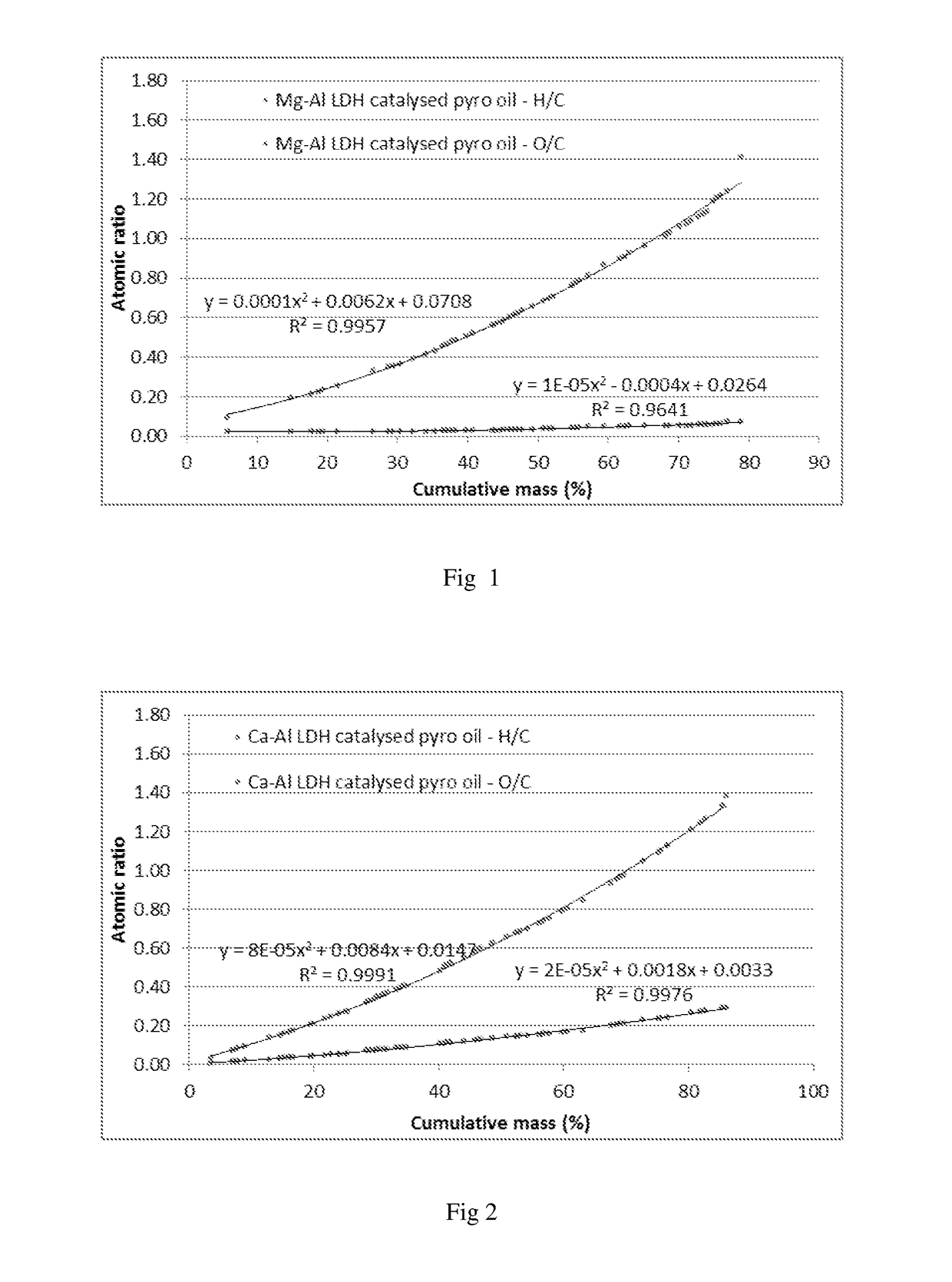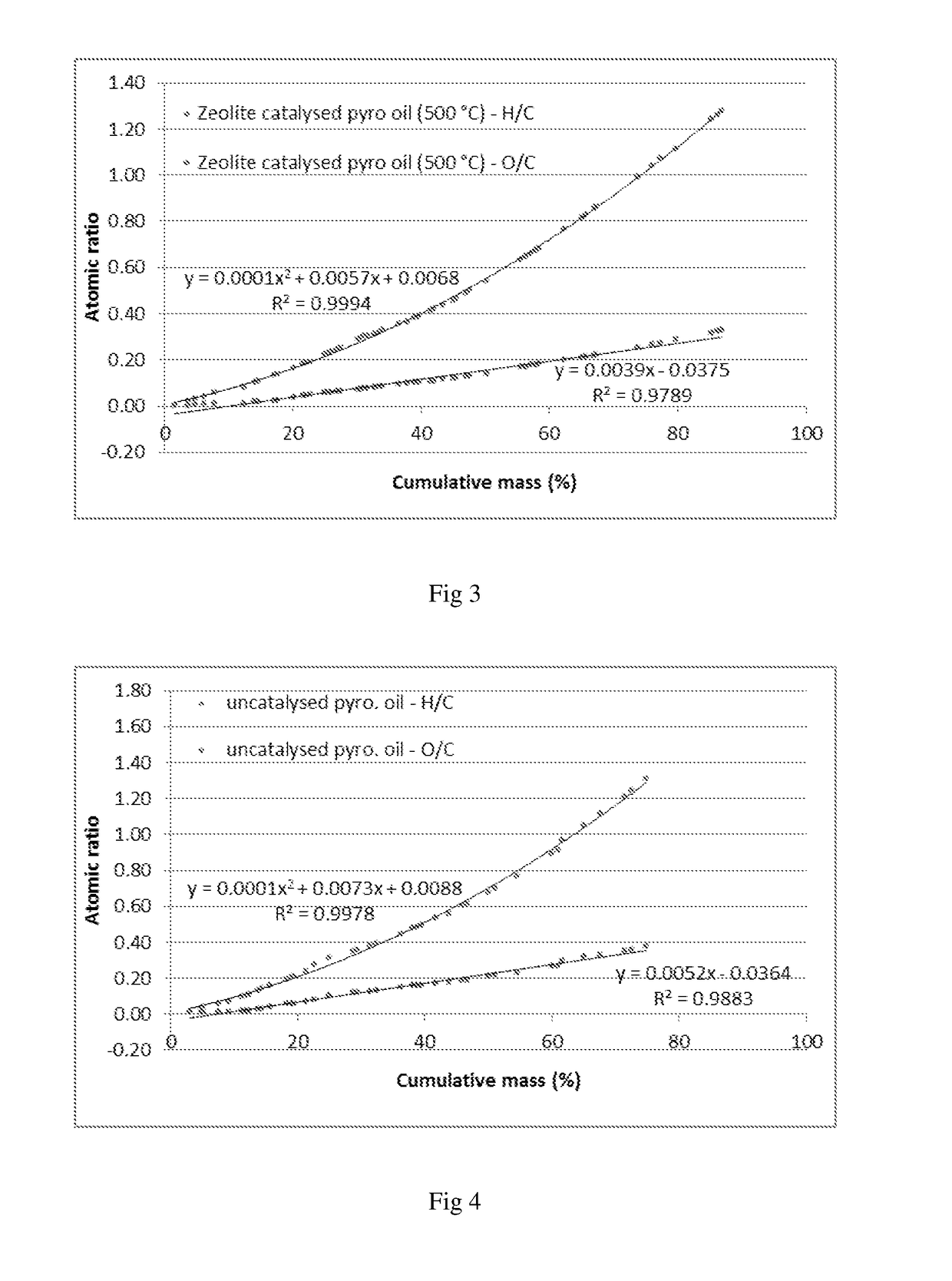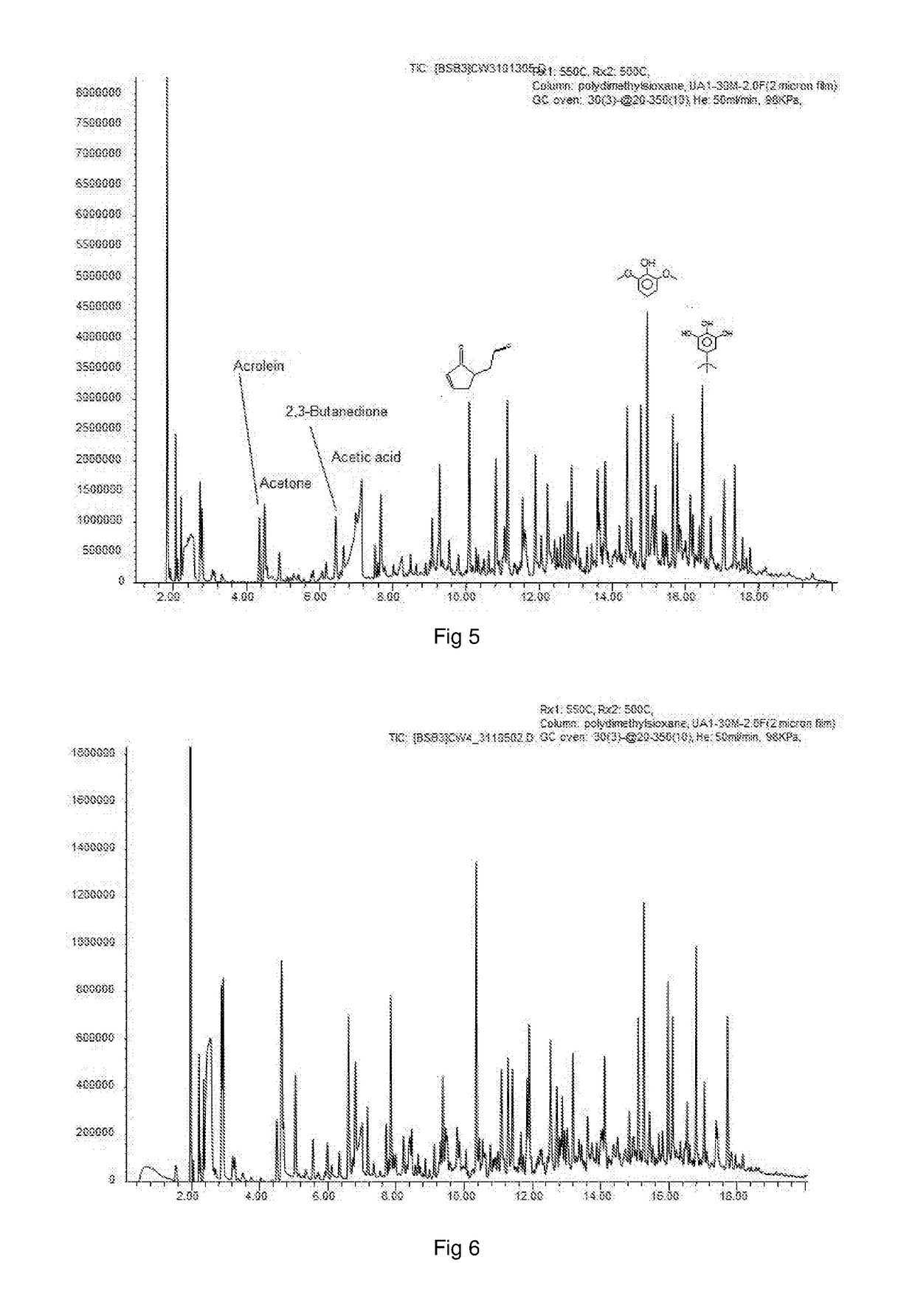Oxygenate reduction catalyst and process
a technology of oxygenate and catalyst, which is applied in the direction of catalyst regeneration/reactivation, physical/chemical process catalyst, biofuel, etc., can solve the problems of the inability to reduce the amount of oxygenate in the catalyst, so as to achieve less endothermic effects and more throughput of biomass
- Summary
- Abstract
- Description
- Claims
- Application Information
AI Technical Summary
Benefits of technology
Problems solved by technology
Method used
Image
Examples
Embodiment Construction
[0054]The invention will now be described, by way of non-limiting example only, with reference to the accompanying diagrammatic drawings. In the drawings,
[0055]FIG. 1 shows the results of the pyrolysis oil deoxygenation for a Mg—Al LDH looping catalyst system;
[0056]FIG. 2 shows the results of the pyrolysis oil deoxygenation for a Ca—Al LDH looping catalyst system;
[0057]FIG. 3 shows the results of the pyrolysis oil deoxygenation for a zeolite catalyst system;
[0058]FIG. 4 shows comparative data to FIGS. 1 to 3 for an uncatalysed pyrolysis production of pyrolysis oil;
[0059]FIG. 5 shows the composition analysis results of the pyrolysis oil deoxygenation for a Ca—Al LDH looping catalyst system;
[0060]FIG. 6 shows the composition results of the pyrolysis oil produced without a deoxygenation catalyst system of the invention;
[0061]FIG. 7 shows the composition analysis results of the pyrolysis oil deoxygenation for a Mg—Al LDH looping catalyst system;
[0062]FIG. 8 shows the composition results...
PUM
| Property | Measurement | Unit |
|---|---|---|
| temperature | aaaaa | aaaaa |
| temperature | aaaaa | aaaaa |
| temperatures | aaaaa | aaaaa |
Abstract
Description
Claims
Application Information
 Login to View More
Login to View More - R&D
- Intellectual Property
- Life Sciences
- Materials
- Tech Scout
- Unparalleled Data Quality
- Higher Quality Content
- 60% Fewer Hallucinations
Browse by: Latest US Patents, China's latest patents, Technical Efficacy Thesaurus, Application Domain, Technology Topic, Popular Technical Reports.
© 2025 PatSnap. All rights reserved.Legal|Privacy policy|Modern Slavery Act Transparency Statement|Sitemap|About US| Contact US: help@patsnap.com



